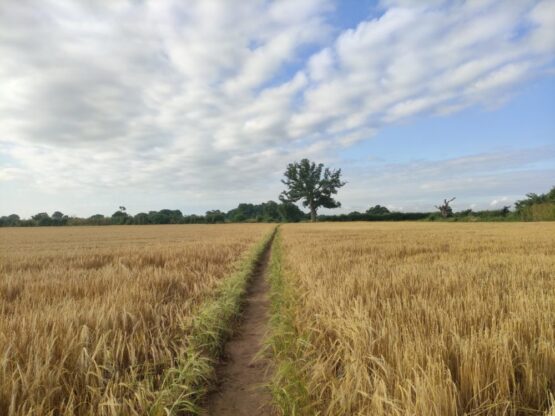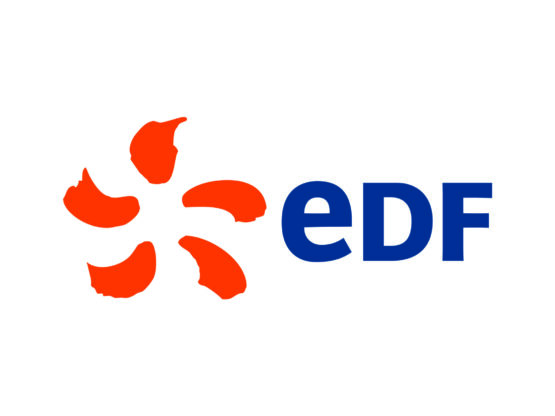Amenity and Accessibility Fund
Funding Criteria & Guidance for Applicants 2024-25

- Overview & Background
- The Fund and its Management
- Geographical Area for the Amenity and Accessibility Fund (AAF)
- Amenity and Accessibility Fund Objectives
- Essential Criteria and AAFG Priorities
- Desirable Criteria
- Who can apply
- Grant Conditions
- Grant Management
- Payment of Grant
- Monitoring
- Promotion and Publicity
- Application Forms

1 Overview & Background
To offset the impact caused by the delay of the release of that part of the Sizewell B site which will accommodate the consented Dry Fuel Store, EDF Energy, Suffolk County Council, Suffolk Coastal District Council (now East Suffolk Council) agreed, in 2012, to establish an Amenity and Accessibility Fund.
The objectives of the Fund are to improve the amenity and accessibility of the Suffolk Coast & Heaths Area of Outstanding Natural Beauty (now branded, and referred to from hereon, as the Suffolk & Essex Coast & Heaths National Landscape) and Suffolk Heritage Coast within the locality of the Sizewell B site and its wider environs.
EDF Energy has a strong track record of behaving respectfully towards the environment. Locally, Sizewell B has won a biodiversity benchmark for the positive way the company has managed the National Landscape in partnership with Suffolk Wildlife Trust. Nationally, EDF Energy launched Team Green Britain in 2009 to help deliver their mission of bringing sustainable, low-carbon solutions home to everyone.
Background: During 2009 a consultation was held with local people about how to manage spent fuel at Sizewell B. At the time, spent fuel from Sizewell B’s reactor was stored in a fuel storage pond, which was expected to provide capacity until 2015. A new solution was required for after this date or until a national repository is made available.
The Government’s Committee for Radioactive Waste Management (CoRWM) is looking at how this might be achieved but has indicated this repository will not be ready for many years. As Sizewell B is due to operate until 2035, with the possibility of life extension beyond that, EDF needed a suitable plan for managing spent fuel from 2015
onwards.
Following thorough consultation and rigorous technical investigations, the construction of a Dry Fuel Store (DFS) was selected as the best solution. A Dry Fuel Store is a mature technology, tried and tested all over the world. It has been constructed on Sizewell B land and was ready for operation in 2016.
2 The Fund and its Management
The Fund is managed by the Amenity and Accessibility Funding Group (AAFG) made up of a representative from EDF, East Suffolk Council and Suffolk County Council, and an Advisor from Suffolk & Essex Coast & Heaths National Landscape.
The AAFG will be responsible for the identification of projects to improve the amenity and accessibility of the National Landscape and Heritage Coast within the locality of the DFS and its wider environs. Funds will be held by Suffolk County Council, and administered by Suffolk & Essex Coast & Heaths National Landscape.
The Fund benefited from an initial one off payment of £120,000 made by EDF Energy when the DFS construction started, and then receives further annual payments by EDF of £20,000 for a period of 60 years or until the date of the commencement of decommissioning of the DFS. The Fund rolls over and any unallocated funds are included in the following year. In 2024-2025 the total Amenity & Accessibility Fund available will be at least £20,000.
3 Geographical Area for the Amenity and Accessibility Fund (AAF)
The geographical area for the AAF is defined primarily by the National Landscape boundary, and then by a boundary of the north bank of the River Deben in the south and the south bank of the River Blyth in the north. Please see the AAF map for further details.
The Fund may operate more widely, for eligible projects that by their very nature necessitate a broader view, for example way-marking the Suffolk Coast Path which runs from Felixstowe to Lowestoft.
4 Amenity and Accessibility Fund Objectives
The AAF objectives are primarily those of the Suffolk & Essex Coast & Heaths National Landscape, with additional objectives specifically about amenity and accessibility.
Projects must demonstrate that they will deliver specific actions or objectives identified within the current, and subsequent, National Landscape Management Plan for the area (available from www.coastandheaths-nl.org.uk or on request), and by fulfilling amenity and accessibility objectives.
The statutory purpose of National Landscapes is to conserve and enhance natural beauty
In addition, the 1991 Policy Statement on National Landscapes identifies three related purposes:·
- Recreation (‘the demand for recreation should be met insofar as this is consistent with the conservation of natural beauty’)
- Socio-economic (‘account should be taken of the needs of agriculture, forestry, other rural industries, and the economic and social needs of local communities’)
- Sustainable development (‘particular regard should be paid to promoting sustainable forms of social and economic development that in themselves conserve and enhance the environment’)
Amenity and Accessibility Fund objectives:
- Amenity projects shall seek to offset the impact caused by the delay of the release of part of the site, and include:
- Projects that improve the environment, natural character and/or sense of place of the area
- Projects that improve the visual appearance of the area and thereby increase the enjoyment and experience of the National Landscape for residents and visitors.
- Projects that conserve and enhance the area’s natural beauty (the principal statutory purpose of the National Landscape).
Accessibility projects shall seek to offset the impact caused by the delay of the release of part of the site, and include:
- Projects that improve sustainable access to the area, within the locality of the DFS developments and its wider environs.
- They may also include projects that improve peoples’ intellectual access to the area, for example through the production of interpretation materials.
5 Essential Criteria and AAFG Priorities
The AAFG is particularly keen to encourage projects that are pertinent to its key priorities. Preference will therefore be given to projects that cover one or all of the following:
- Conservation of landscape character and enhance the distinctive nature of the National Landscape
- Conservation of biodiversity and lessen fragmentation of habitats
- Conservation of the historic resources of the area including landscapes and the built environment
- Conservation of the geodiversity of the area
- Provision and enhance of access and recreation provision
- Provision of interpretation that improves understanding, guides behaviour and helps people enjoy the National Landscape
It will also be useful for applicants to consider how their project meets sustainable development objectives within the National Landscape:
Does your proposed project help conserve or enhance the natural beauty of the National Landscape and the Amenity and Accessibility Fund area?
Economic sustainability:
Does it help the local economy in some way?
Does it generate its own income?
Does it attract other contributions?
Does it generate new or safeguard existing employment?
Social sustainability:
Does it develop community infrastructure?
Does it provide training or build community capacity to tackle things?
Does it provide new or improved local services?
Does it allow/ improve access for a wide spectrum of society?
Does it have support or involvement of local communities?
Environmental sustainability:
Does it help biodiversity and/or sustain distinctive landscapes?
Does it protect natural resources?Involve reducing, recycling, or reusing materials?
Does it minimise adverse transport aspects?
Whilst the project does not have to bring equal benefit to all strands, there should be an element of help for each aspect, or certainly no adverse impact. Sustainable development is about the wise use of resources and avoids the exploitation of one strand to the detriment of the others.
6 Desirable Criteria
A key aim of the scheme is to mitigate the impact of the DFS and thereby to support communities in ways that enhance understanding of amenity and accessibility of the area, while promoting co-operation and social inclusion. Preference will therefore be given to projects that cover some or all of the following:
- Demonstration of innovation or best practice
- Promotion of or help implement social inclusion
- Actively involve members of the community
- Provide benefit to the public
- Involvement or encouragement of partnership working
- Complementary to key local and national strategies
- Involvement of young people
- Has little or no access to alternative funding sources
- Lever in contributions from other sources
- Provide potential PR for project and the AONB
This is not a comprehensive list and other activities could qualify for a grant.
7 Who can apply
- The Fund is open to organisations or groups from the public, private, voluntary and community sectors from within or outside the AONB, where projects benefit the Fund area.
- Whilst applications from individuals are not precluded, there needs to be wider public benefit and it is expected that in most cases applications will be submitted on behalf of organisations or groups of people.
- Applicants need not necessarily come from, or be based in, the AONB. However, projects must further the amenity and accessibility of the AONB.
8 Grant Conditions
Applications will be assessed by the AAFG. They will look at the above AAFG objectives and criteria to judge how well the proposed project meets those aspirations. The AAFG will favour projects that really grasp the concept of amenity and accessibility, and have demonstrated how they are trying to meet the criteria and priorities of the National Landscape.
The AAFG may advise that an offer is made for less than the full amount requested. They may also give guidance to the National Landscape Advisor to discuss certain aspects of the project with the applicant to clarify details before they give their final advice.
The level of grant support will not normally exceed 75% of the total costs. Voluntary and community organisations may be able to use ‘in kind’ help (e.g. volunteer time or the loan of equipment, premises or land) to form at least part of their matching contribution. Up to 100% will be available in exceptional circumstances where the project is particularly innovative or struggling to find matching funding, although in most cases this will require a very clear demonstration of community support.
It is important for the AAFG to see the financial details of a project. The application form should include a detailed breakdown of the expenditure and income of the project. It is important for the AAFG to see how the money is likely to be spent. The AAFG appreciates that some elements may be hard to cost but it is important that expenditure is not lumped together under large general headings or that guesses are made about costs.
This is to everyone’s benefit as it would be sad to find there is not enough money to complete the project when the AAFG would have been willing to offer more grant aid to a well thought out application. If estimates have to be made, please indicate this on the form.
9 Grant Management
Applications will be acknowledged within five working days, and applicants will be informed of the date on which the AAFG will consider their application. Applicants may in some instances be asked to provide further information to allow a decision to be taken.
The National Landscape Advisor will undertake a simple eligibility assessment and will often come back to applicants if there is missing information or they feel the project is not eligible. However it is the responsibility of the applicants, not the National Landscape Advisor, to see that they have supplied all the required information.
Applicants will be informed within five working days of the AAFG funding meeting whether their application has been successful, and if so the amount of grant they have been offered. This will be followed up by written confirmation and a formal offer of grant aid for successful applicants.
This will normally include certain conditions regarding what the grant is supporting, accepting the offer of grant within a certain period, the evidence required to prove the project has been completed that will need to accompany the claim for the grant.
10 Payment of Grant
The payment of the grant will be dependent on the submission of relevant records (e.g. receipted invoices) as detailed in the grant offer letter or agreed in writing subsequently with the applicants.
Grants are usually paid in arrears, on successful completion of the project and a final monitoring report, and are paid on receipt of an invoice addressed to the Fund. A case can be made with the application, or exceptionally when returning the acceptance of the grant offer, for money to released up front – i.e. before the project is started.
This is to help with issues of cash flow for smaller organisations and is unlikely to be more than 50% of the grant offer. Confirmation of receipt of other funds is also required (where relevant).
If the application is from non VAT registered organisation/body/individual the AAF can fund up to 75% of the gross cost of the project. (i.e. VAT cost can be met by the Fund). If the application is from a VAT registered organisation the AAF cannot meet any VAT costs (i.e. use figures excluding VAT).
Unless otherwise agreed in writing all projects must be completed by the following March (i.e. grants awarded from April 2024 must be completed and claimed for by mid March 2025). If a project seems unable to fulfil its aims or meet its conditions, and complete by the agreed time, then the AAFG has the right to agree with the project manager to “call in” the grant, and not award the funds.
11 Monitoring & Publicity
The National Landscape Advisor will monitor the progress of projects and may, if required, carry out site inspections. If this monitoring highlights difficulties with the project there may be the need for discussion and negotiation. It is the desired intention to help all projects reach a satisfactory conclusion, but the AAFG will wish to safeguard the wise and legitimate use of the Fund.
Monitoring forms are required mid-year (29th September 2024), and are a necessary part of the feedback to the AAFG.
In addition, the National Landscape Advisor will request a short Final Report by 13th March 2025 to be emailed to [email protected]. The grant money will not be paid until the Final Report and an invoice is received.
This report should be approximately one page and include an overview of the project achievements, lessons learnt/difficulties encountered and how the terms and conditions were met. You will be asked to include at least two photos of the project plus any feedback or quotes from participants that the AAFG has permission to use in its own promotions.
12 Promotion and Publicity
The AAFG reserve the right to use any material submitted for publicity purposes. ‘The Amenity and Accessibility Fund’ must be acknowledged on all completed projects and mentioned in all press releases and publicity material relating to projects.
The National Landscape Grants Officer must see any planned promotional materials in draft, before going to print. This is to help avoid any errors in use of fund name, any mis-spellings or incorrect ways of referring to the funders and the National Landscape.
For further guidance on publicity requirements and support available from the National Landscape Team please see ‘Publicity Guidance for Grant Funded Projects’ revised in 2024 to reflect the new National Landscape branding.
13 Application Forms
Completed applications (preferably typed, or if not, clearly written) should be submitted on the AAF application form, by 22nd March 2024
Email: [email protected]
Tel/Fax: 01394 445225
National Landscape Grants Officer
Amenity and Accessibility Fund
Suffolk & Essex Coast & Heaths National Landscape
Saxon House
1 Whittle Road
Hadleigh Road Industrial Estate
Ipswich
Suffolk
IP2 0UH
